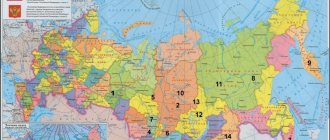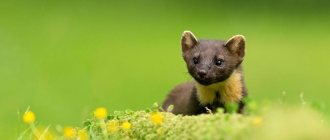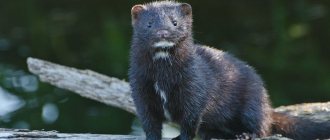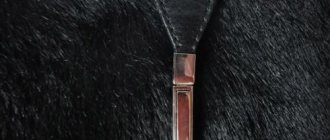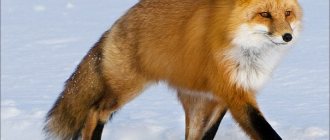Sable (Martes zibellina) is a beautiful predatory animal with valuable fur. He is the closest relative of the pine marten. Very similar to her in appearance, his habits also partially coincide. The skin of this animal is of high value. Life expectancy in the wild is no more than 8 years.
Based on habitat, fur color and thickness, the following subspecies are distinguished:
- Sayan;
- West Siberian;
- Sakhalin;
- Barguzinsky;
- Yenisei;
- Kamchatka sable.
Origin of the species and description
Photo: Sobol
Findings by which one could trace the development of this species are very scarce. In the Miocene, a genus appeared to which the sable belongs. At that time, the predator lived in large areas in the west and south of Europe, in South-West and Central Asia, and in North America.
Forms close to modern ones exist in the Pliocene. Remains were found in the late Pleistocene in the Urals, Altai, Cisbaikalia, as far as Kamchatka and Sakhalin. Fossils are preserved in the Upper Pleistocene layers of the foothills of the Eastern Sayan Mountains and the river basin. Hangars. In the Tertiary period, due to the formation of new biocenoses, the division of mustelids occurred. At that time, the sable acquired characteristic features that distinguish it from other species of this family.
Video: Sable
In the early historical period, the habitat area extended from modern Finland to the Pacific Ocean. Between the Pleistocene and Holocene, during the retreat of glaciers and the appearance of forests, the animal left the area of the border of the glacial zone and settled in more favorable places. 20-40 thousand years ago the predator was found in the Urals, but did not reach high numbers in post-glacial times (8-11 thousand years ago).
The bones of the animal found in Altai are more than 100 thousand years old. In the Trans-Urals and Siberia, no remains older than 20 thousand years have been found, although this does not mean that mammals were not found in an earlier period. In the evolutionary development of the mustelid family, differentiation was based on differences in adaptation to the habitat, food supply and method of hunting.
Keeping at home
If you take a very small milk sable, you can make a pet out of it. He is easily tamed, he just needs to arrange an area for playing, for example, a balcony or a separate room with a net. It is necessary to purchase plastic toys; the animal is very active and will definitely need to be played with.
Gets along great with pets. Feed with meat waste, offal, cereal porridge, adding minerals and vitamins. You can give cat or dog food. The Institute of Cytology and Genetics is engaged in the domestication of the Altai sable, setting itself the goal of preserving the population and genetic diversity of this species.
They compiled a genetic map that included all the varieties distributed throughout Russia, with topological marks of populated areas.
Domesticated sables are being introduced into pockets of wild representatives of the breed, into places uninhabited by people. This brings results in increasing the number of animals.
Appearance and features
Photo: Animal sable
The predator looks like a marten, but anyone who has seen these related species will not confuse them, since the sable’s body and tail are shorter in proportion. The head is large with widely spaced and rounded ears. The paws are wide, five-toed, with hair on the soles.
In males:
- body weight – 1150-1850 g;
- body length – 32-53 cm;
- tail length – 13-18 cm;
- hair length – 51-55 mm;
- underfur length – 32-31 mm.
In females:
- body weight – 650-1600 g;
- body length – 32-53 cm;
- tail length – 12-16 cm;
- hair length – 46 mm;
- underfur length – 26-28 mm.
The mammal exhibits great geographic variability in body size, color, and fur quality. Based on these characteristics, there are descriptions of more than 20 geographical subspecies. The largest individuals are found in Kamchatka, Altai, and the Urals. The smallest ones are in the area of the Amur and Ussuri basins. Animals from the Urals have lighter fur, and the darkest fur is found in specimens found in the Baikal and Transbaikalia regions, the Amur region and Yakutia.
The winter fur of the predator is very fluffy, thick and silky. In summer, the animal looks longer and thinner, but its paws and head remain large. The color of the winter coat is one tone, from dark brown, almost black, to brown and fawn with a thick grayish underfur. The muzzle and ears are slightly lighter than the main color. On the throat there is a blurred, sometimes completely invisible, small spot of a yellowish or whitish color. In summer, the fur is not so thick and fluffy. It is darker in tone than winter. In some subspecies the tail is slightly darker than the main color.
Production
The market value of the finished product directly depends on the color of the Barguzin sable. Rich, dark fur has the highest price. Most often it is obtained from the Baikal forest areas. The sable that lives in this area has the darkest fur.
In the fashion world, products made from this raw material are valued primarily for their beauty and durability. A good fur coat will last for many years, warming its owner during frosts. However, global fashion houses do not focus on practicality. Today, black Barguzin sable is a sign of status and wealth. It pairs with dresses and outfits from famous couturiers.
For the first time, global designer Marc Jacobs presented an innovation to the public. His products were made from sheared sable fur, which further increased its cost and reduced its service life. After all, fur coats made from undercoat are quite susceptible to rubbing. However, ladies from high society were not particularly worried about this. After all, chic coats and capes were worn exclusively at expensive receptions, where it was impossible to freeze. The products served more of a decorative function.
Where does the sable live?
Photo: Sable in the snow
The fur-bearing animal is found in Russia, Kazakhstan, China, Mongolia, Japan and North Korea. Inhabits coniferous Siberian forests and the European northeast, crossing the Ural Mountains to the west. The distribution area is in the Altai and Western Sayan mountains. The southern border reaches 55° latitude in Western Siberia, and 42° in Eastern Siberia.
The range reaches the extreme southern points of the Korean Peninsula and the island of Hokkaido; the predator is found in Sakhalin. In Mongolia, it is distributed in the north-west of the country, around lake. Khubsugul. In Transbaikalia, where the harshest continental climate is, the most valuable subspecies of this animal lives in the forests. In eastern Kazakhstan, it inhabits the basins of the Uba and Bukhtarma rivers. In China there are in the north in the mountains of Southern Altai, in the northeast of the country - in Heilongjiang province, as well as on the Changbai Mountains. The habitat of the predator is an area of 5 million m2.
A representative of the mustelid family likes to settle in cedar forests, on mountain slopes, where there is a cedar shrub. It is here that there are many rodents, which are attracted by the abundance of food - pine nuts. The fluffy beauty can live in mountain and lowland taiga, where it prefers windbreaks and dead wood. The animal lives, but is found much less frequently, in small-leaved and pine forests, along clearings and burnt areas, and swampy places. On the Kamchatka Peninsula it settles in groves of stone birch, alder and cedar dwarf trees. In the mountains it can rise to the level of subalpine forests.
What does a sable eat?
Photo: Sable in winter
This omnivorous predator hunts small mammals - they make up 60-80% of the diet. In addition to mice, voles and other rodents, which dominate its menu, it can hunt chipmunks, squirrels, hares, pikas, and muskrats. It also attacks mustelids: ermine, weasel. The mammal is able to follow the trail of wolves or bears for a long time and then share a meal with them. Near the carcasses of large animals that have become victims of other predators, the fur-bearing animal lives and feeds for several days.
In snowy years, when other prey is difficult to catch, the sable even hunts musk deer alone. And then several individuals gather for a feast near the prey, which is much larger than the predator. A small hunter attacks large animals when the harvest of cedar nuts and dwarf cedar fails (their share can reach 33-77%, depending on the presence or absence of other food sources). In summer it eats berries: rose hips, lingonberries, bird cherry, rowan (4-33%).
The share of birds, mainly grouse, accounts for 6-12%; it also catches smaller birds, destroying nests, eats eggs, amphibians, mollusks, insects, and does not disdain carrion. The Far Eastern sable eats fish after spawning. The predatory instincts of a mammal are reduced with an abundance of plant food. If there is not enough food, then he approaches human settlements. The animal needs food in an amount of at least 20% of its body weight, this is equal to the production of 6-8 vole mice per day.
Wishes of tourists to the administration
It should be noted that tourists have a number of wishes regarding their holiday in “White Sable”:
- Visitors would like to see night signs in front of the hotel for dark times of the day.
- There were also comments that after skiing for a family of several people there were not enough hangers in the room to dry clothes.
- In one of the reviews, guests recommend diversifying the menu in the restaurant.
- There were also wishes to make the selection of sports equipment at the rental point wider.
- During night discos, guests leave late and make noise under the windows for a long time. I would like to find some solution to this situation.
Source
Features of character and lifestyle
Photo: Taiga animal sable
The animal is very dexterous and strong, tireless, with good hearing and excellent hunting skills. This allows him to find prey by identifying the object by smell and rustle. The animal is active at any time of the day or night, it all depends on the weather and the availability of food. In frosty weather it is able to stay in shelter for several days.
The sable is a terrestrial predator, although it easily climbs a tree, but is not capable of jumping from branch to branch. It moves well under snow cover and can thus evade pursuit, but hunts on the surface, and prefers to sit in ambush rather than pursue. The forest beauty moves in small jumps of 40-70 cm, but when escaping from pursuit, it can increase their length to 3-4 m.
This animal has a permanent home range of 4 to 30 km2, and also has several temporary habitats and hunting areas. The size of the site and activity depend on age, gender, weather conditions and climate, population density, and food availability. On average, he runs about 9 km per day.
Leading a sedentary lifestyle, the sable rarely leaves its refuge; it travels no further than 30 km from the marking sites. Adult individuals can undertake long-distance movements of up to 150 km, which take several months to overcome. He does not make a den for himself, but is looking for a suitable place for giving birth and raising cubs, as well as for the winter.
The dwelling is lined with dry grass, wool, lichen, feather, finding shelter:
- under the roots of fallen trees;
- in stumps;
- in dead wood;
- in stone placers;
- in hollows located low above the ground.
Temporarily, escaping from pursuit, it takes refuge in rock crevices, rocky outcrops, tree crowns or underground burrows. In winter it burrows under a deep layer of snow. The animal sheds twice a year: in the spring it begins in March and ends in May; in the fall this period lasts from August to November.
Nutrition
The Barguzin sable, a photo of which can be seen in our article, feeds mainly on various rodents. Among them are red-backed voles, pikas, as well as squirrels and hares. In addition, the animal loves to feast on birds, for example, hazel grouse or wood grouse. The sable's hunting mode directly depends on the feeling of hunger. Despite the fact that the main activity occurs at night and at dusk, the predator also often goes fishing in broad daylight. In addition to food of animal origin, the sable loves to eat nuts and berries, such as lingonberries, blueberries, rowan, currants, blueberries, rose hips and bird cherry. Thanks to a varied diet, the Barguzin sable, the photo of which shows the animal in all its splendor, boasts silky and shiny fur.
Social structure and reproduction
Photo: Sobol
Sable is a loner by nature, he is polygamous. To mark territory, it uses scent glands, which are located on the back of the abdomen. The rut begins in July and ends in August. Gestation time lasts about 245-297 days. Of this period, seven months are in the latent stage, when the embryos do not develop. This nature of pregnancy is provided by nature so that the cubs appear at a more favorable time.
Newborns are born in April blind, with grayish sparse down. A litter can have from two to six babies. The length of the body is 11-12 cm, with a weight of 25-30 g. They begin to hear on the 22nd day, and by the month they become sighted, by the 38th day they have incisors. At 3-4 months, baby teeth are replaced by permanent ones. By 1.5-2 months. the babies begin to leave the nest, at about the same time they stop feeding on their mother’s milk and weigh about 600 g, and by September they reach the size of adults and begin independent life. Reproductive ability in a sable appears at the age of two years.
During rutting and courtship, animals make sounds similar to meowing and also grumble gutturally. When they are excited or unhappy, they purr, and to scare them, they chirp loudly. The lifespan of the animal in nature is about 8 years, in captivity on average up to 15-16 years, but cases have been recorded when some individuals lived up to 18-20 years, and females gave birth to offspring up to 13-14 years. The animal has interspecific trophic connections (eats or is prey) with 36 mammals, 220 birds, 21 plant species.
Maintenance on farms
It is good to conduct the initial stage of creating a farm with a person who has experience in this matter. Choose an area near the forest, protected from the wind, flat, without strong changes in terrain. Equip a fence to
| Before setting up a sable breeding business, you should consult with a lawyer, because the rules provide for the sale of pelts only to state-owned enterprises. If an unknowing breeder sells fur to a private person, this will be a violation of the law. |
prevent wild animals from entering yards. Provide electricity, sewerage, water. The breeder arranges separate enclosures or cages for separate keeping of females and males. In the cage or house there is a separate room for a hole in which the puppies will be located. During the rut, the animals are kept together and their behavior is observed - individuals that do not want to mate are discarded and go to pelts in the fall.
The animals are purchased from farms a couple of months before the rut and seated in pairs, observing the boys’ ability to rut. The selected varietal individuals are marked, assigning a number to each and placed on the farm to produce offspring. Females are given even numbers and odd numbers for males, as is customary in fur farming.
The most promising producers are given a passport, preserving their pedigree up to the third generation. The grown young animals are placed in separate cages. To obtain high quality fur, they are well fed with offal, rabbit meat, chicken meat, and beef. Add berries, fruits, cereals.
Due to the high demand for sable fur, well-equipped farms bring high income to their owners. To begin with, it is enough to have 50 animals and set up a farm in your dacha, which will reduce rental costs.
The approximate price of a live animal is 200-500 dollars. The first year will only be expenses, but with proper care, the livestock will triple within a year. By the end of the second year, the skins are slaughtered and sold.
It is recommended to sell through a fur distribution company. State farms sometimes disperse animals into their habitats to maintain the population. This helps protect animals from extermination.
Natural enemies of sables
Photo: Animal sable
Our dexterous hunter himself often becomes the prey of larger predators.
These are the eight species of mammals:
- Brown bear;
- wolf;
- fox;
- lynx;
- arctic fox;
- wolverine;
- tigers;
- harza.
Eight species of birds also attack small animals:
- white-tailed eagle;
- golden eagle;
- crow;
- goshawk;
- sparrowhawk;
- great gray owl;
- hawk owl.
A sable can die not only from the teeth of predators, but also from a lack of food when there is fierce interspecific competition. It wages such a struggle for habitats and food supply with 28 species of mammals and 27 species of birds. One of the main enemies that almost destroyed this species of animal is man. In the 17th century, the Kamchadals exchanged with the Cossacks, who were developing lands on the eastern borders of Russia: they gave 8 sable skins for one knife, and 18 for an axe, not considering this fur valuable.
